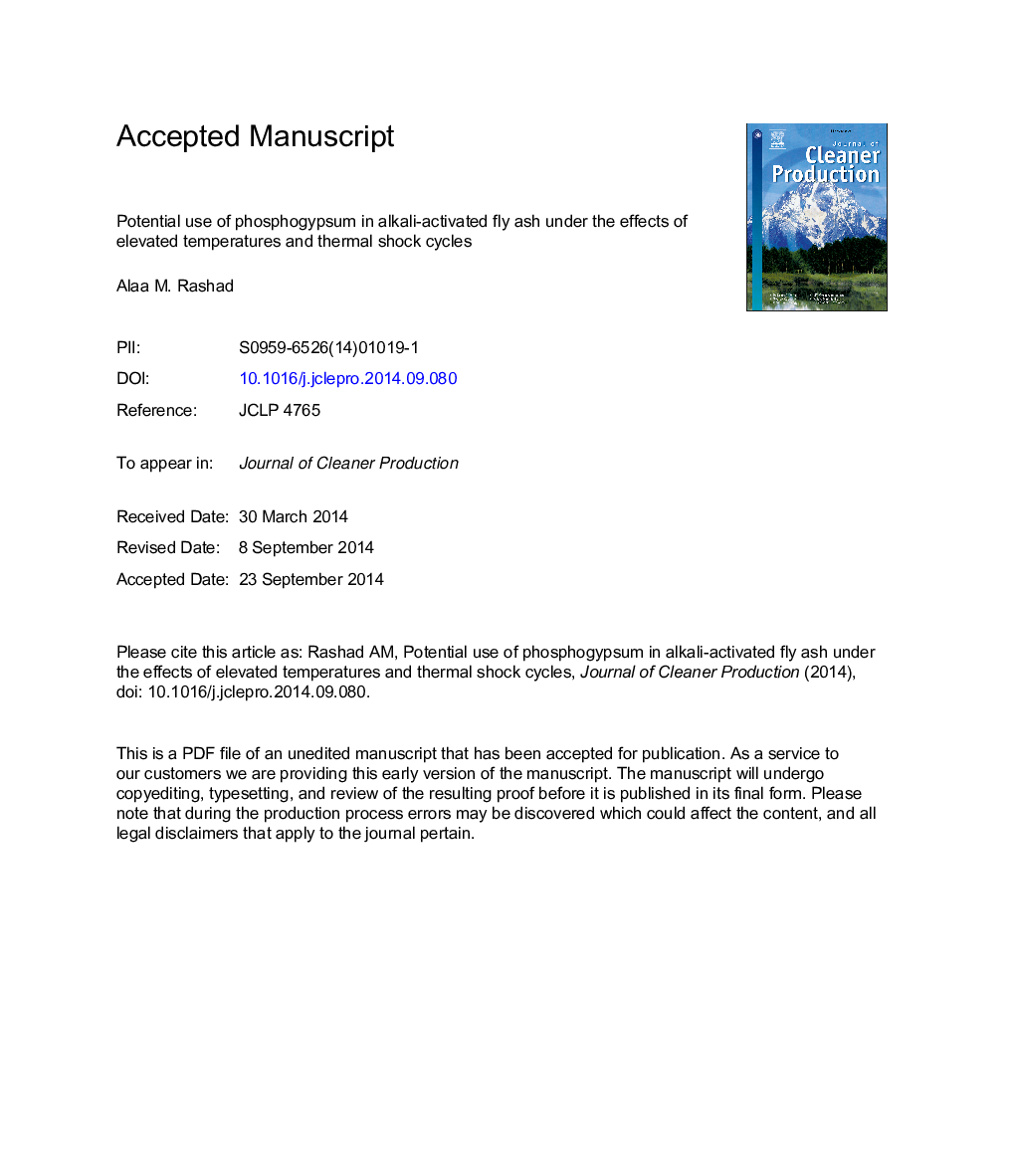| Article ID | Journal | Published Year | Pages | File Type |
|---|---|---|---|---|
| 8105389 | Journal of Cleaner Production | 2015 | 44 Pages |
Abstract
Recycling of waste material is one of the effective solutions of its disposal problem. Fly ash (FA) and phosphogypsum (PG) take large disposal area and create serious environmental pollution like leaching and dusting. It is important to utilize these wastes as building materials to save the environmental from degradation. In this article, the possibility of recycling calcined PG (CPG) as a partial replacement of FA in alkali-activated FA (AAFA) paste was studied. FA was partially replaced with CPG at levels of 0%, 5%, 10% and 15%, by weight. Compressive strength at ages of 3, 7 and 28 days was measured. The behaviour of the investigated mixtures after being exposed to 400, 600, 800 and 1000 °C for 2 h was evaluated by measuring the residual compressive strength. Water quenching test was applied to determine the thermal shock resistance. The various decomposition phases formed and the morphology of formed hydrates were identified by using X-ray diffraction (XRD), thermogravimetric analysis (TGA) and scanning electron microscopy (SEM). The results showed that the compressive strength before and after firing increased with the inclusion of 5% and 10% CPG, whilst the inclusion of 15% decreased it. The thermal shock resistance decreased with increasing CPG content.
Keywords
Related Topics
Physical Sciences and Engineering
Energy
Renewable Energy, Sustainability and the Environment
Authors
Alaa M. Rashad,
